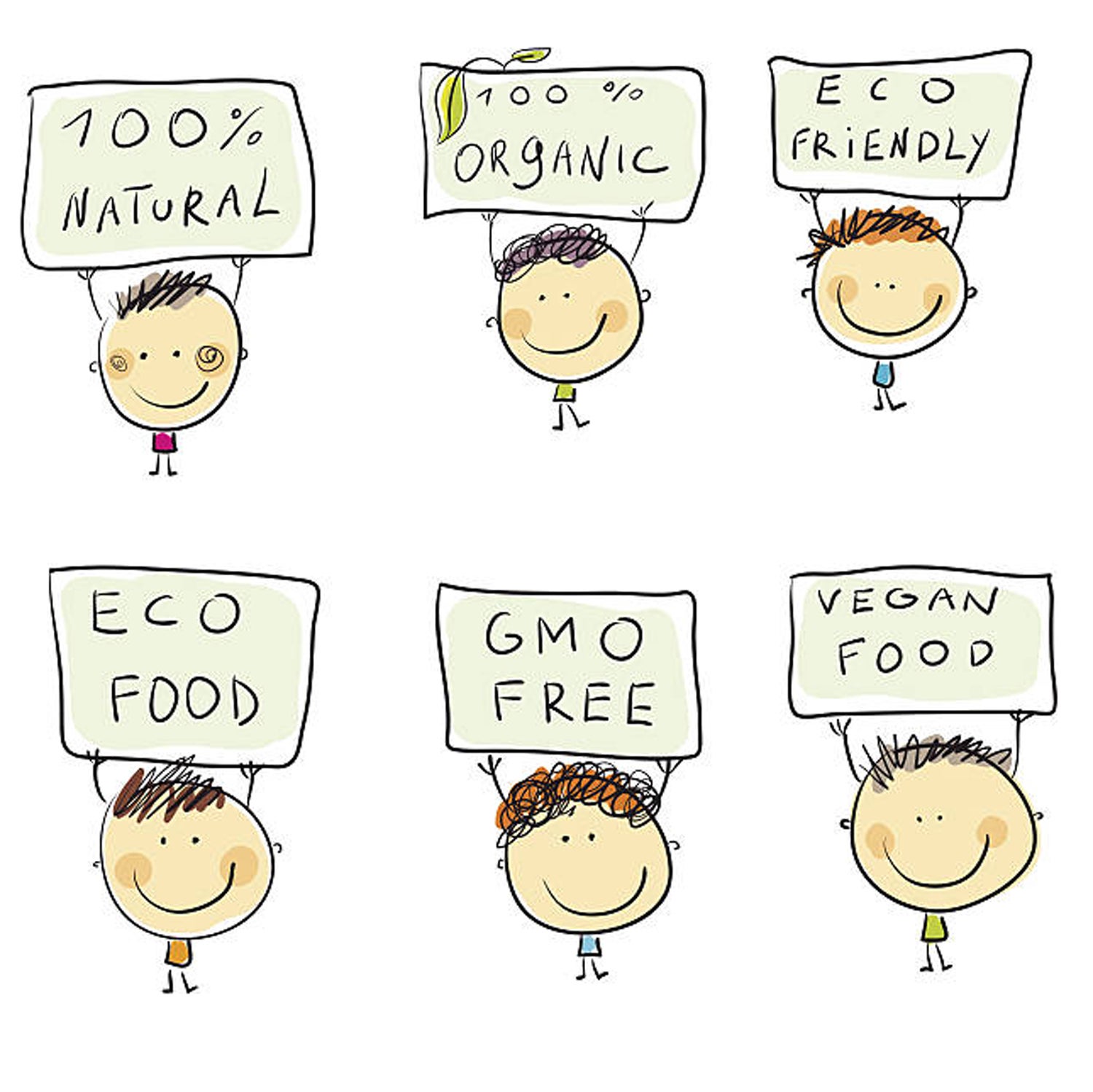In May, the International Food Information Council Foundation (IFIC) released survey data that revealed a harsh revelation about us typical grocery shoppers: We’re pretty much clueless. Whether it’s about what’s healthy, what’s safe, or what’s better for the planet, our decisions are largely guided by complicated nutrition advice and a savvy food marketing industry rather than recommendations grounded in science. All this confusion means we’re spending way too much money on things we think are good for us but in reality offer negligible benefits.
We looked at the results of the IFIC survey to see which nutrition labels are influencing our perceptions—and to offer advice for not falling prey to them.
LOW-FAT
The Perception: Something that’s lower fat has fewer calories, so you can eat your favorite foods—like yogurt or cheese—with less risk of weight gain.
The Reality: Low-fat doesn’t necessarily mean fewer calories. In fact, you’ll likely end up eating more than you would with the full-fat alternative simply because you think you’re making the smarter choice and because fat leaves you feeling fuller longer, so it takes less of it to satisfy your hunger. Any calories that you are in fact saving are likely just added back in as sugar, which helps to salvage the taste and mouthfeel of whatever’s left once you remove the fat.
The Verdict: If you’re about to buy something because it’s labeled as low-fat, read the nutrition facts and ingredient list to determine what’s making it palatable.
ALL-NATURAL
The Perception: Foods with this label are better for you and the environment. It’s basically like eating organic without the hefty price tag.
The Reality: All-natural labels try to capture the crowd who aren’t quite willing to make the jump to pay for organic but still want to feel like they’re putting something good into their bodies. But all-natural is not the same as organic. The Food and Drug Administration and the U.S. Department of Agriculture (USDA) regulate organic foods and have strict guidelines on what qualifies as such. All-natural foods, however, remain unregulated, so there’s no guarantee that the product actually has fewer modified ingredients or cleaner production practices than a conventional option.
The Verdict: Either buy organic—preferably locally sourced—or save your money and buy foods made with healthy, whole ingredients and without any fancy labeling.
VITAMIN-FORTIFIED
The Perception: Vitamin-fortified foods are healthy because they provide essential vitamins without the need for a supplement.
The Reality: Many brands add vitamins to foods that are inherently unhealthy—cookies, candies, chips, and other snacks foods—and call them nutritious. This vitamin craze has affected purchasing behavior: A study of more than 5,000 grocery shoppers showed that when presented with two snack options—one healthier, whole-food-based option and one vitamin-fortified option—consumers were more likely to buy the latter, without scrutinizing the ingredient list. This is a problem because those added vitamins don’t make up for the empty calories, sugar, and unhealthy fats acting as their vessel.
The Verdict: Get your vitamins in foods that should have them, like fruits and vegetables.
GMOs
The Perception: They’re not good for you. So you shop at natural-food stores and always buy the foods labeled as “non-GMO” at regular supermarkets.
The Reality: The GMO battle rages on, with farmers, industry giants, and agricultural biotech firms all making their case either for or against GMOs. But the science remains murky: There’s no definitive take on what GMOs are actually doing to the body and the environment. Some people argue that foods that are genetically modified in any way often last longer, have higher levels of antioxidants or vitamins, and might even taste a bit better. Research shows that consumers who don’t know much about the GMO debate will actually pay an upcharge for products that boast these qualities. It’s only when they’re introduced to the controversy—typically through some sort of marketing or PR campaign—that they balk at buying foods with modified ingredients.
The Verdict: We’re all still pretty confused. Try to pay less attention to any sweeping generalizations in either camp. Instead, focus on looking at a food holistically for its health benefits rather than fixating on one item from the label.
ORGANIC
The Perception: Organic foods are healthier, safer, and better for the environment.
The Reality: The USDA gives its stamp of organic approval to products that “rely on natural substances and physical, mechanical, or biologically based farming methods to the fullest extent possible.” For produce, that means the soil has to be pesticide-free for three years; meats must be antibiotic- and hormone-free and raised in conditions that emulate their natural environments; and 70 percent of the ingredients in processed, packaged goods must adhere to these parameters. Organic foods enjoy tremendous popularity among the health-conscious crowd with more disposable income to spend on their food. The most recent USDA data values the industry at $5.5 billion, with sales up 72 percent since 2008. Consumers believe that just being labeled as organic implies a slew of health and environmental benefits—most of which can’t actually be guaranteed. Even when the first national standards for the organic label were issued by then Secretary of Agriculture Dan Glickman, he made it clear that “the organic label is a marketing tool, not a statement about food safety or a value judgment about nutrition or quality.” The label remains marred in conflict over how it may alienate smaller farmers who practice many organic methods but can’t afford to keep up with industrial agriculture, how it does or doesn’t adapt to new farming approaches like hydroponic growth, and how it suggests these foods are healthier and safer than conventional alternatives without definitive evidence to support such claims.
The Verdict: This isn’t to say that there’s no value in buying organic. But you shouldn’t make it your go-to based on assumptions that it’s unequivocally better for you, safer, and more eco-friendly. If you want to go organic, stick with local farmer’s markets and community gardens to support your local economy and small-scale farmers and to cut down on transportation pollution.

